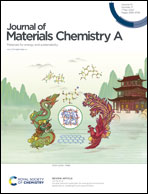iR drop correction in electrocatalysis: everything one needs to know!
Abstract
Direct current (DC) voltammetric techniques in which the potential is controlled while the response is measured as current are in use for decades now in the screening of electrocatalysts used in energy conversion devices, sensors, and electrolyzers despite being inferior in many ways to alternating current (AC) techniques and other advanced voltammetric techniques because of their simplicity to use and handle resultant data. One of the major issues with the controlled-potential DC techniques where the applied potential is controlled by means of a reference electrode is the potential drop at the interface. This drop in potential affects the obtained results to an inconceivably greater extent in some cases. Hence, this drop in potential is manually corrected by following Ohm's law. However, there exists a pile of miscalculated potential drop corrections in the literature because of the challenges in understanding them and the unawareness of the protocols that need to be followed. To help the beginners of this field, this article is dedicated to defining and elaborating a potential drop, the factors influencing it, commonly made mistakes, and best practices.

- This article is part of the themed collection: Editor’s Choice 2023: Advancing electrocatalysts for a sustainable future.


 Please wait while we load your content...
Please wait while we load your content...